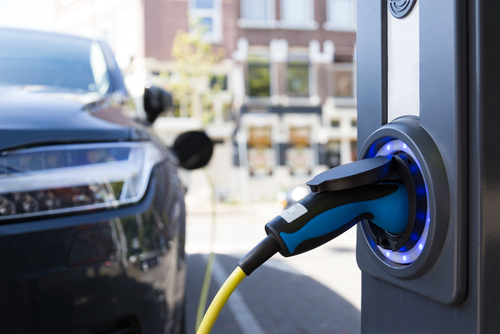Panel explores wide-ranging electric vehicle policy options

WASHINGTON – The adoption of electric vehicles (EVs) will impact a wide range of stakeholders, leaving state policymakers to determine where responsibilities lie and how to balance the needs of numerous groups. A panel this week at the National Association of Regulatory Utility Commissioners (NARUC) Winter Policy Summit discussed the potential roles of utilities, regulatory commissions, state energy offices, consumer advocates and other stakeholders in advancing EVs.
Todd Rath, director of marketing strategy, programs and intelligence for Alabama Power Company, said there is a need for both private investment and utility-owned EV infrastructure.
“We think utilities are well-positioned to work within a variety of models to facilitate the installation of electric charging infrastructure, Rath said. “In some cases, it may be … right for utilities to own that infrastructure in certain areas, and also it may be better in some cases for utilities to have service policies in place that promote the investment by private industry.”
Rath also argued that there are responsibilities for both utilities and state public service commissions in driving EV adoption. Commissions, he said, develop rules and policies, while utilities develop programs and rates.
Commissioner Anthony O’Donnell of the Maryland Public Service Commission noted the importance of input from consumer advocates and called for a more active role from state energy offices with driving EV adoption.
O’Donnell noted that Maryland’s Electric Vehicle Infrastructure Council is both multi-agency and cross-jurisdictional. It’s led by the Maryland Department of Transportation and includes representatives from the Maryland Public Service Commission, Maryland Department of the Environment, Maryland Energy Administration and other state agencies and private sector groups.
When the Maryland Public Service Commission began its proceeding related to EVs, O’Donnell said, it invited representatives from the state’s environment, transportation and energy offices to “come to the table, set the tone, because we knew we were doing this in a broader context with broader executive branch agencies that … this all had implications for, ultimately to benefit the citizens of the state.”
One question surrounding EVs that impacts transportation departments is the issue of road use taxes. Currently, taxes on gasoline and diesel fuel provide substantial funding for roadway infrastructure.
Elin Katz, Connecticut’s Consumer Counsel and president of the National Association of State Utility Consumer Advocates, argued that “you’ve got to find money somewhere, and it can’t all come from electric consumers to address transportation problems …” She suggested that a portion of revenue from tolls could fund EV infrastructure.
Increased use of electric vehicles is also expected to have a substantial impact on the electric grid. A study by the National Renewable Energy Laboratory (NREL) found that electricity demand could increase by as much as 38 percent by 2050, largely due to the adoption of EVs. Charging could significantly increase loads at times when large numbers of people are charging their vehicles simultaneously.
O’Donnell noted that the Commission included utility reporting requirements in its electric vehicle infrastructure program, which it approved last month. The measures require utilities to monitor their EV programs’ progress and report it to the commission every six months. This information will help the commission to understand the long-term distribution system impacts and planning of EVs. Utilities will also use the data to develop rate design options and load management programs.
